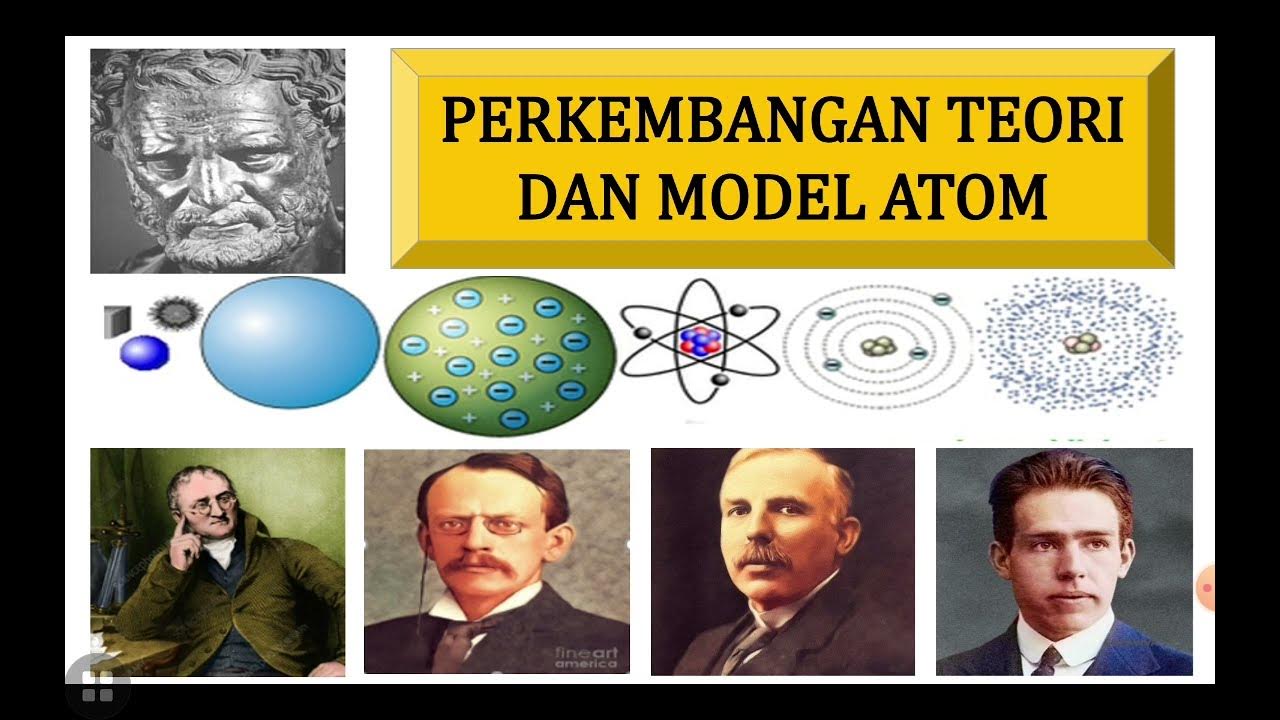TEORI ATOM DAN PARTIKEL PENYUSUN ATOM
Summary
TLDRThis script delves into the evolution of atomic theory, starting from Dalton's atomic model to the modern quantum mechanical model. It explains the basic particles that constitute an atom: electrons, protons, and neutrons. The video describes the discovery of the electron by Thomson, the proton by Goldstein, and the neutron by Chadwick. It also touches on the limitations of early models and how later theories, including Bohr's model and the uncertainty principle, refined our understanding of atomic structure.
Takeaways
- 😀 The script discusses the development of atomic theory and the basic particles that make up an atom.
- 🔬 The first model of the atom mentioned is Dalton's atomic theory, which proposed atoms as indivisible and spherical particles.
- 🌐 Thomson's model followed, suggesting atoms consist of a positively charged sphere with electrons scattered within, like plums in a pudding.
- 💥 Rutherford's model introduced the concept of a small, dense, positively charged nucleus with electrons orbiting around it.
- 🌀 Bohr's model refined the atomic structure, proposing that electrons orbit the nucleus in specific, discrete energy levels.
- 🌌 The modern quantum mechanical model of the atom describes electrons as existing in orbitals with varying probabilities rather than fixed paths.
- 🔋 The basic particles of the atom include electrons (negatively charged), protons (positively charged), and neutrons (neutral).
- 👨🔬 Thomson discovered the electron through cathode ray tube experiments, demonstrating its negative charge.
- 🔋 Millikan determined the charge of an electron through his oil-drop experiment, quantifying it as 1.6 × 10^-19 coulombs.
- 👨🔬 Rutherford discovered the nucleus of the atom by observing the scattering of alpha particles off gold foil.
- 🚀 Chadwick identified the neutron, a neutral particle in the atom, through experiments involving radiation from beryllium hit by alpha particles.
Q & A
What are the five models of the atom mentioned in the script?
-The five models mentioned are the Dalton model, Thomson model, Rutherford model, Bohr model, and the modern quantum mechanical model.
What is the main concept of Dalton's atomic theory?
-Dalton's atomic theory is based on the idea that atoms are the smallest indivisible units of matter and that all atoms of the same element are identical in mass, volume, and other properties.
What was the Thomson model's representation of the atom?
-The Thomson model represented the atom as a positively charged sphere with electrons embedded within it, often referred to as the 'plum pudding' model.
What discovery led to the Rutherford model of the atom?
-The Rutherford model was developed after the discovery of the atomic nucleus through the gold foil experiment, which showed that atoms have a dense, positively charged center.
What was the significance of Niels Bohr's model in understanding atomic structure?
-Bohr's model introduced the concept of electrons orbiting the nucleus in specific energy levels and that electrons do not radiate energy while in these stable orbits, which helped explain the stability of atoms.
How does the modern quantum mechanical model differ from Bohr's model?
-The modern quantum mechanical model describes electrons as existing in probabilistic orbitals rather than fixed orbits, incorporating principles of wave-particle duality and uncertainty.
What are the three basic particles that make up an atom?
-The three basic particles are electrons, protons, and neutrons.
Who discovered the electron and what was the method used?
-J.J. Thomson discovered the electron using cathode ray tube experiments, which demonstrated that cathode rays were composed of negatively charged particles.
What was the significance of the Millikan oil drop experiment?
-The Millikan oil drop experiment measured the charge of an electron by observing the behavior of tiny oil droplets in an electric field, determining the elementary charge to be approximately 1.6 x 10^-19 coulombs.
What is the role of the neutron in an atom?
-Neutrons are neutral particles found in the atomic nucleus alongside protons, and they contribute to the mass of the atom without affecting its overall charge.
How did Ernest Rutherford's gold foil experiment change the understanding of the atomic structure?
-Rutherford's gold foil experiment demonstrated the existence of a small, dense, positively charged nucleus at the center of the atom, as alpha particles were deflected at various angles when they encountered it.
Outlines

Esta sección está disponible solo para usuarios con suscripción. Por favor, mejora tu plan para acceder a esta parte.
Mejorar ahoraMindmap

Esta sección está disponible solo para usuarios con suscripción. Por favor, mejora tu plan para acceder a esta parte.
Mejorar ahoraKeywords

Esta sección está disponible solo para usuarios con suscripción. Por favor, mejora tu plan para acceder a esta parte.
Mejorar ahoraHighlights

Esta sección está disponible solo para usuarios con suscripción. Por favor, mejora tu plan para acceder a esta parte.
Mejorar ahoraTranscripts

Esta sección está disponible solo para usuarios con suscripción. Por favor, mejora tu plan para acceder a esta parte.
Mejorar ahoraVer Más Videos Relacionados

What Are The Different Atomic Models? Dalton, Rutherford, Bohr and Heisenberg Models Explained

Sejarah Perkembangan Model Atom

Struktur Atom (1) | Perkembangan Teori Atom | Kimia Kelas 10

Apa itu Atom? | Teori Perkembangan Atom - Kimia IPA

The Quantum Mechanic Model: HISTORY OF ATOM | Grade 9 Science Quarter 2 Week 1

Kimia X - Struktur Atom #3 | Perkembangan Teori dan Model Atom
5.0 / 5 (0 votes)
